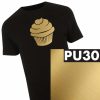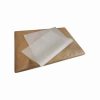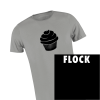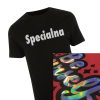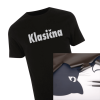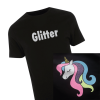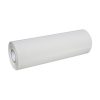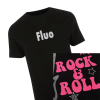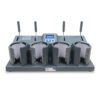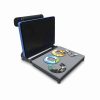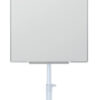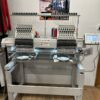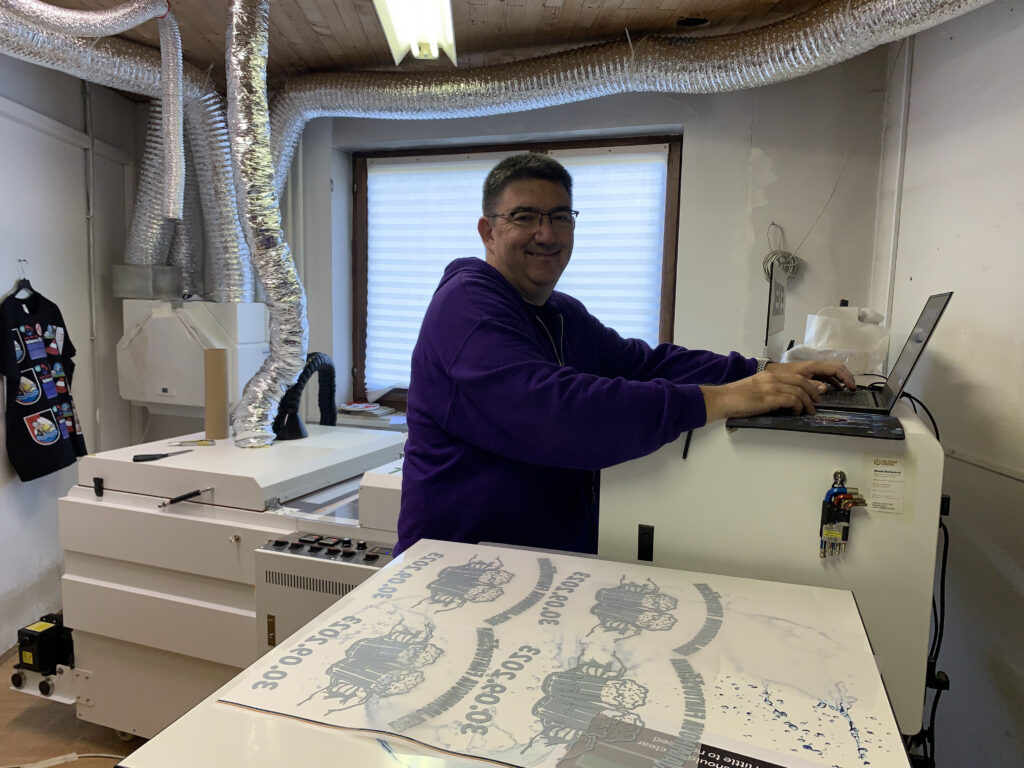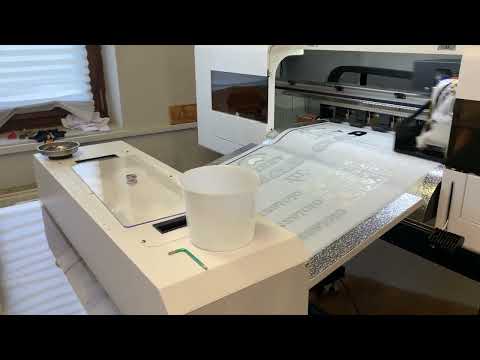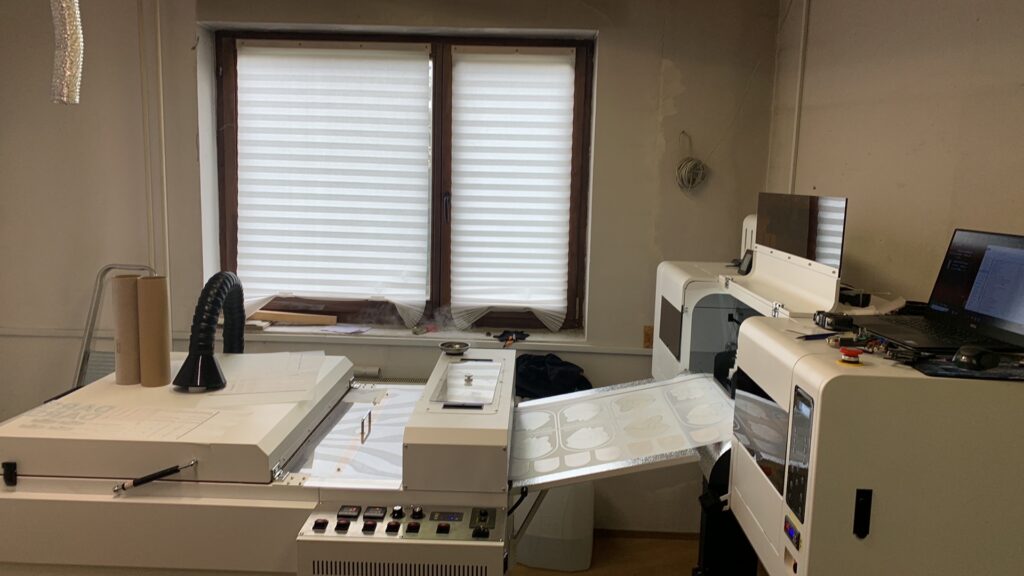DTF Printing
DTF Printing
DTF Printing
is the most advanced technique for printing on T-shirts, hoodies, and other textile products. It took us several years to fully understand and adapt this technology to our market. Although it appears to be an extremely simple technique, it comes with many challenges. At Gajcom, we have tackled DTF printing diligently, and we can now confidently say that we know what we’re doing.
DTF stands for “direct to film,” which involves printing on a special film or foil that also serves as a transfer medium for applying the color onto the T-shirts. Water-based inks and a special powder are used in the printing process.
This is a transfer technique, meaning that the color is first applied to the film, dried, and then transferred to products like T-shirts, hoodies, jackets, coats, bags, hats, umbrellas, and even some wooden and paper items using a heat press.
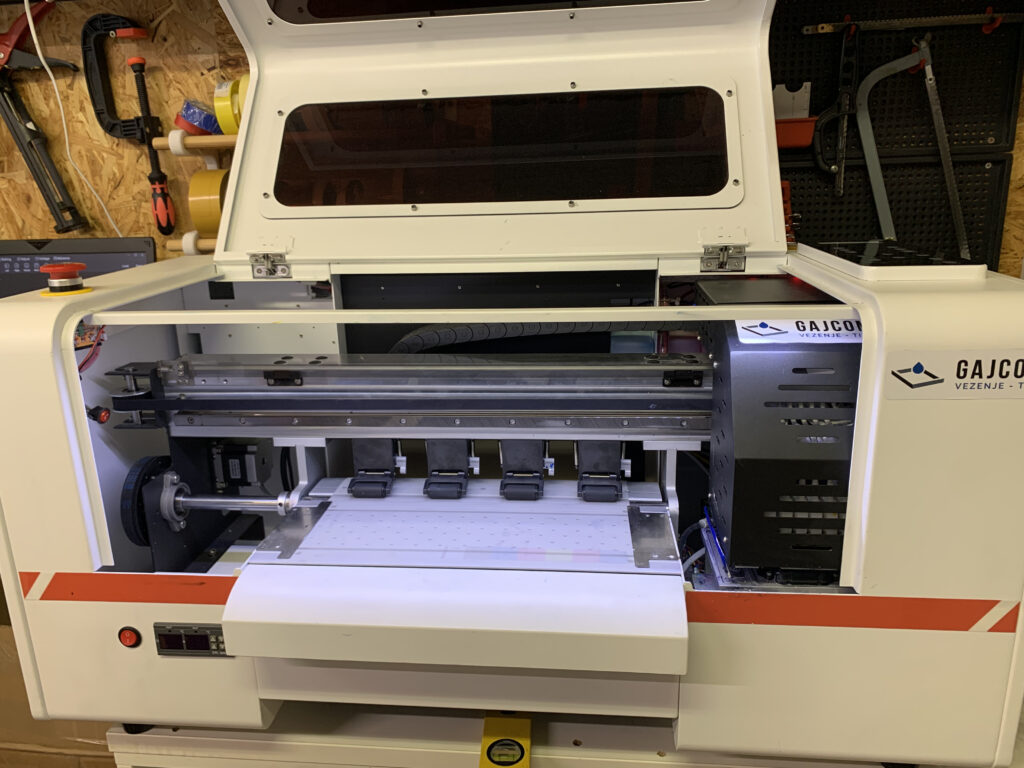
Sizes of DTF Printing
You can print on sheets of A3 size, and rolls with widths of 30, 33, and 60 cm are also available. You can find all DTF films at this link.
At Gajcom, we print on a film width of 60 cm. If you order transfers from us, prepare the file for a transfer width of up to 55 cm. More about how you can order transfers can be found here.
The size of DTF transfers depends on the size you need. For T-shirts and hoodies, we usually print with a width of up to 33 cm. When ordering, be especially mindful of the dimensions of your heat press. We recommend that the transfer is a few centimeters smaller than the gross surface area of the press to achieve the best possible result when applying transfers to T-shirts.
DTF Print Colors
The colors provided by DTF printers are practically limitless. For now, you cannot print silver, gold, and fluorescent colors, but the printer covers all CMYK shades and, of course, includes white. Therefore, DTF transfers are also suitable for colored and black T-shirts.
The colors are vibrant. The strength of colors also depends on the quality of the print, which is necessarily related to the print speed, as well as the choice of colors and film. Pressing also affects the print result – test different heat press settings before printing larger series.
Accurate color shades are determined through a lengthy profile creation process. Profiles are commands that the program gives to the printer based on the desired print result. Creating a profile requires a lot of patience, but once the profile is created, printing is simple and much higher quality.
Profiles can vary depending on the choice of colors and film, the surface you’re printing on, and especially whether you are printing photos (faces), graphics, or text.
The image below shows a snapshot from the process of creating one of the profiles. The process takes a lot of time and requires considerable patience and precision. At Gajcom, we create profiles solely for our own needs.
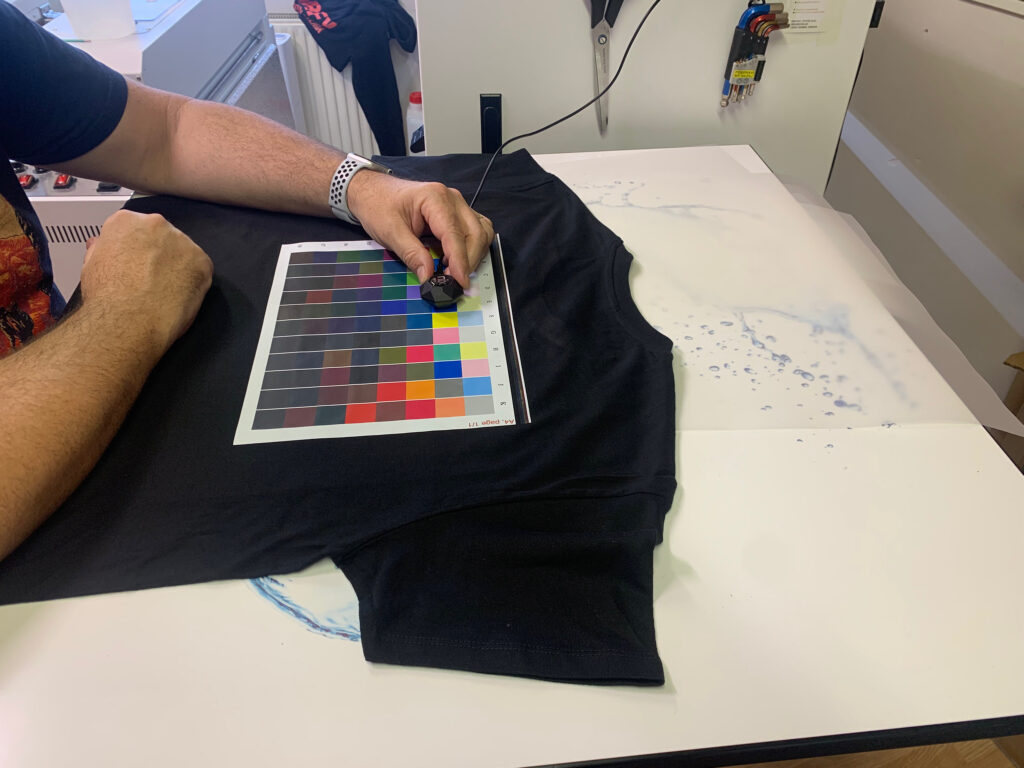
In the image below, you can see a comparison of the print before and after calibration. The left image shows the print before calibration. Although it “lacks nothing”, the color shades are still not correct, and the clarity of the details is worse compared to the right image.
The right image very closely matches the original color tones of the cat. The accuracy of the shades can also be tested by the blue color of the upper paw – the correct pantone shade is, in fact, this paw on the right image.
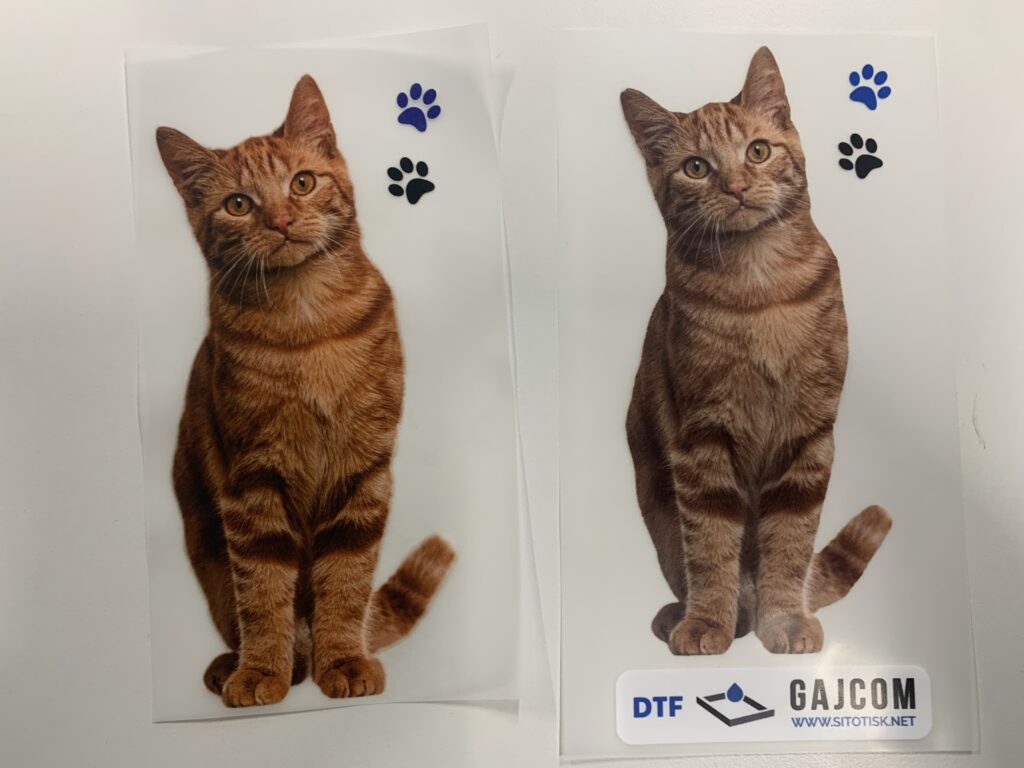
DTF Printing Speed
The printing speed with a DTF printer depends on the printer (whether it has two or four heads, how stable the film holders are, and the overall setup of the printer…), as well as on how well we know how to use the printer or what kind of output we desire.
Faster printing does not always mean lower print quality.
However, if we want to achieve equally good results and increase the printing speed with the printer we have, we need to correctly set the profiles and have a good understanding of the printer.
When setting up the printer, you will experiment with the number of passes. We recommend at least 8 passes, although we often use more passes for printing. Unidirectional printing almost always yields better results than bidirectional printing, but it is, of course, much slower.
If you are going to undertake a smaller print run, it makes sense to print more slowly. Especially if your graphics have fine lines, dots, and other delicate details. For larger series, it makes sense to test faster printing, as differences are not noticeable in most designs.
Some of you have your smaller and slower printers, but sometimes you receive larger orders, maybe even more demanding ones, where you need color calibration. If your printer cannot handle it, you can order the transfers from us.
Buy colors, powder, and film for DTF here
For printing, we use Hanrun Paper colors, powder, and film, and additionally TTS film, all of which are available to you if you do the printing yourself. Stock is always fresh, and the materials are tested and definitely work.
[ux_image id=

